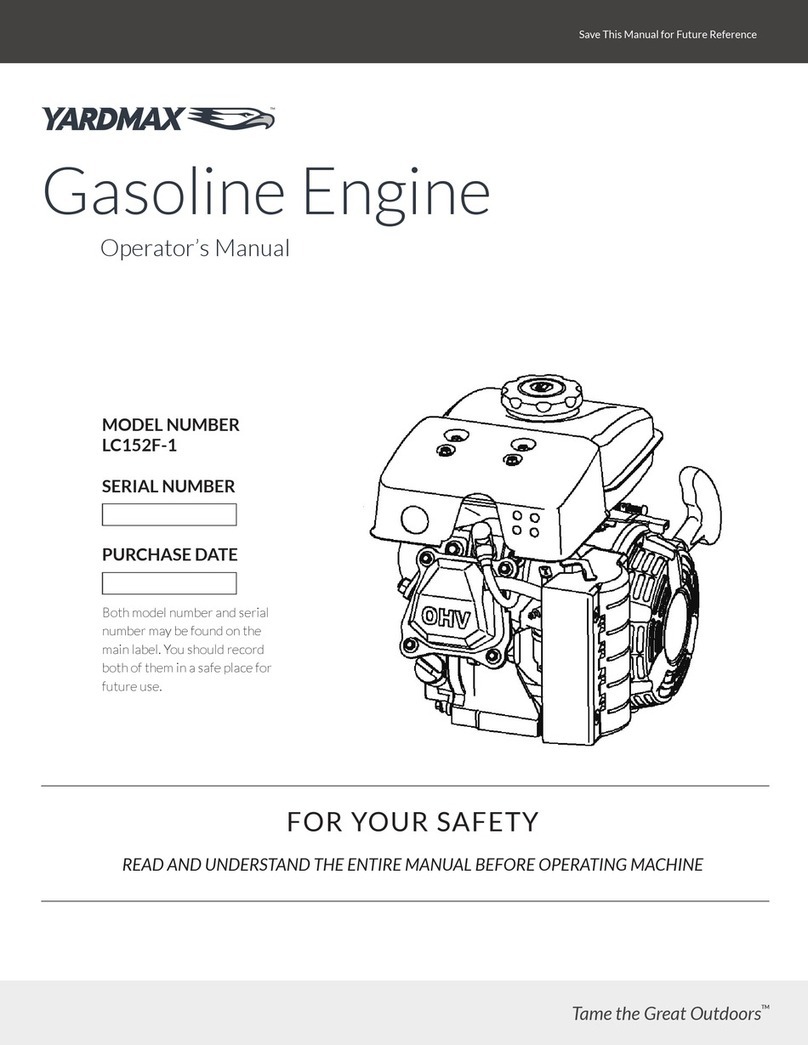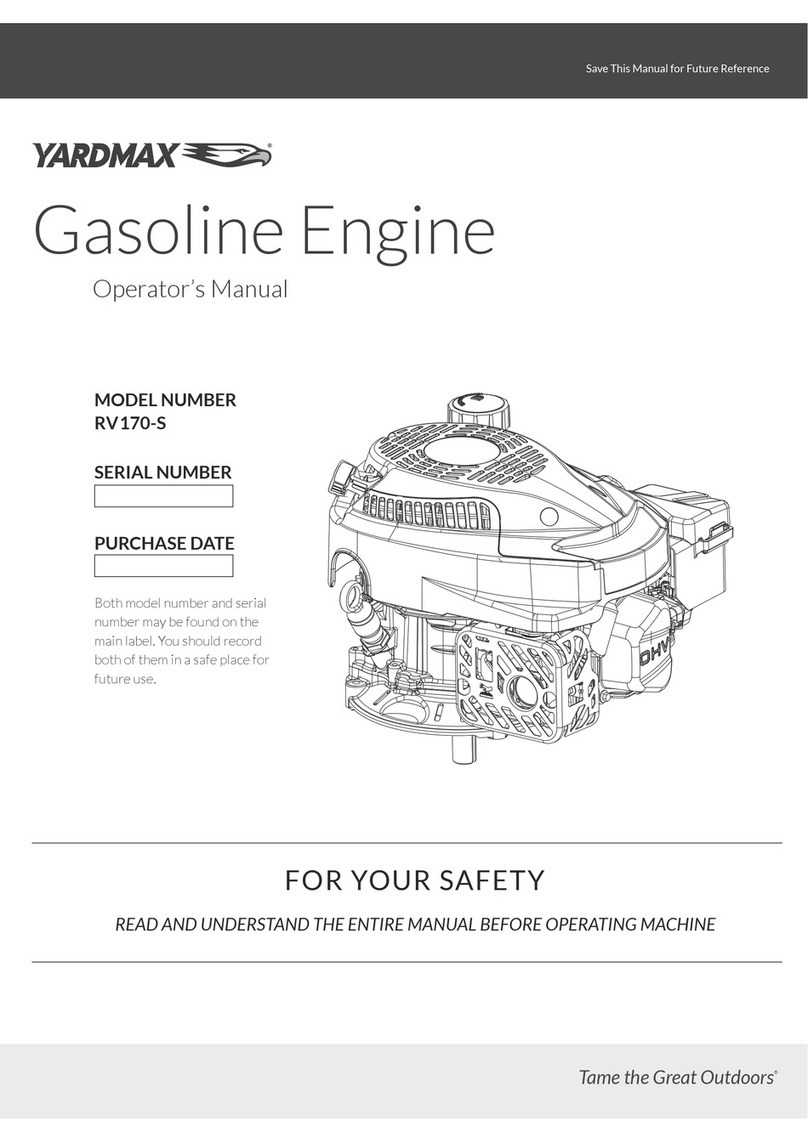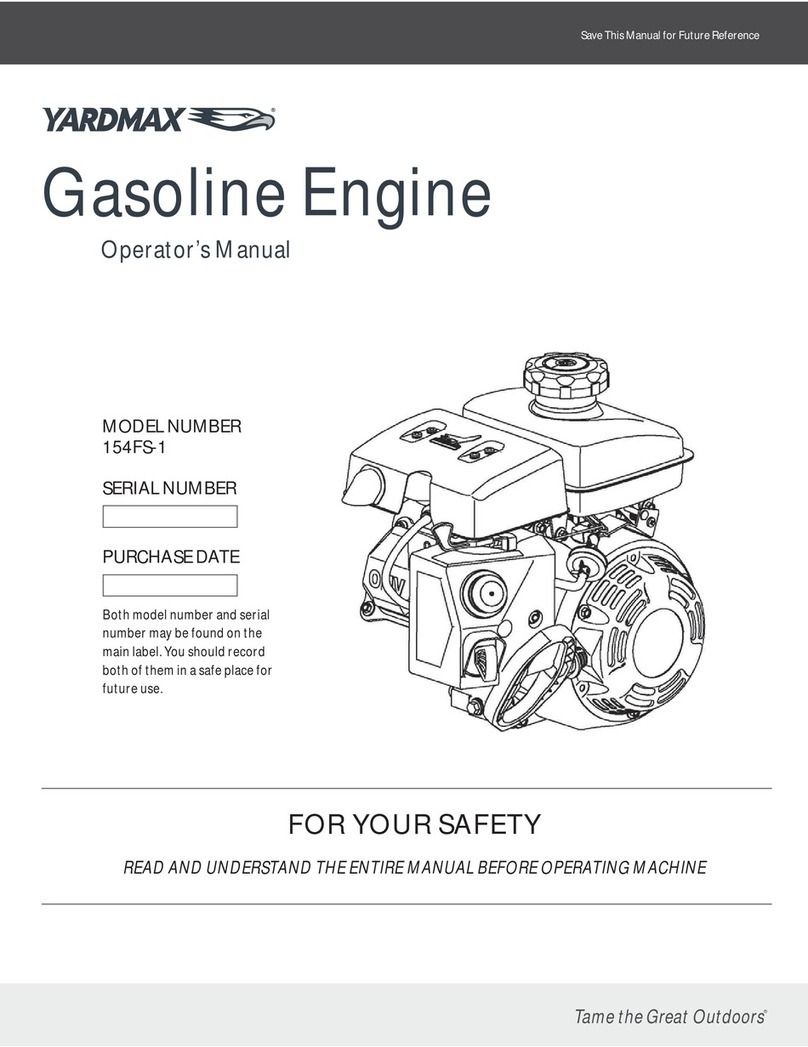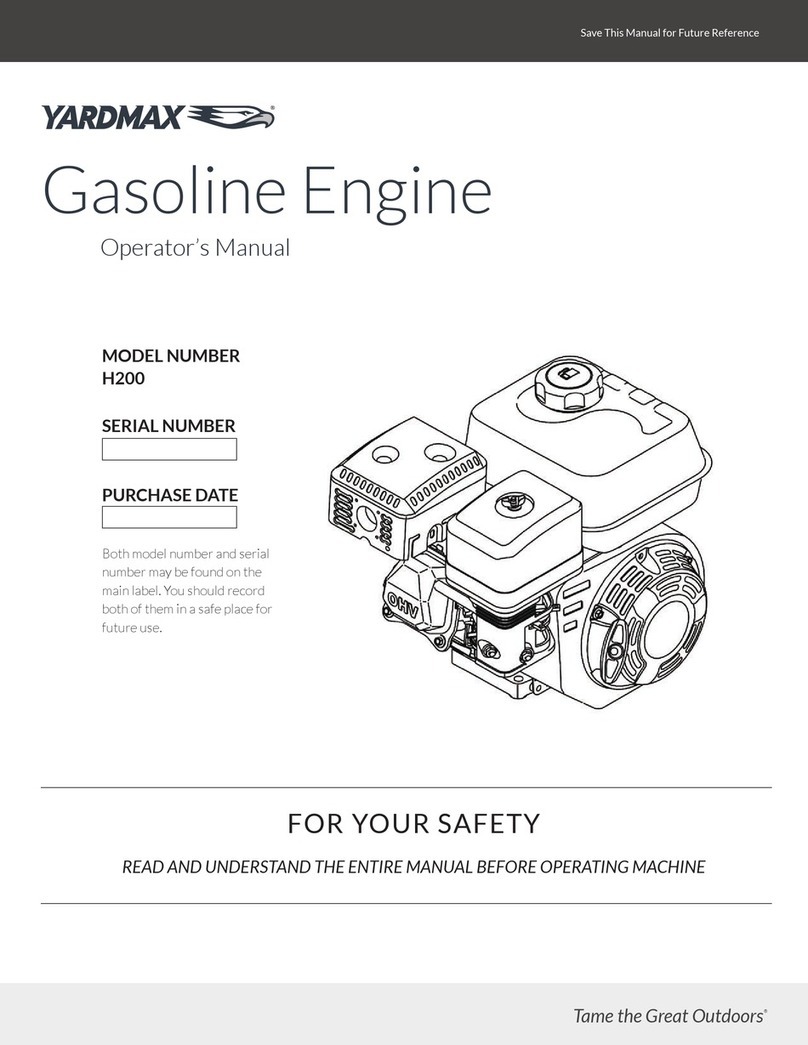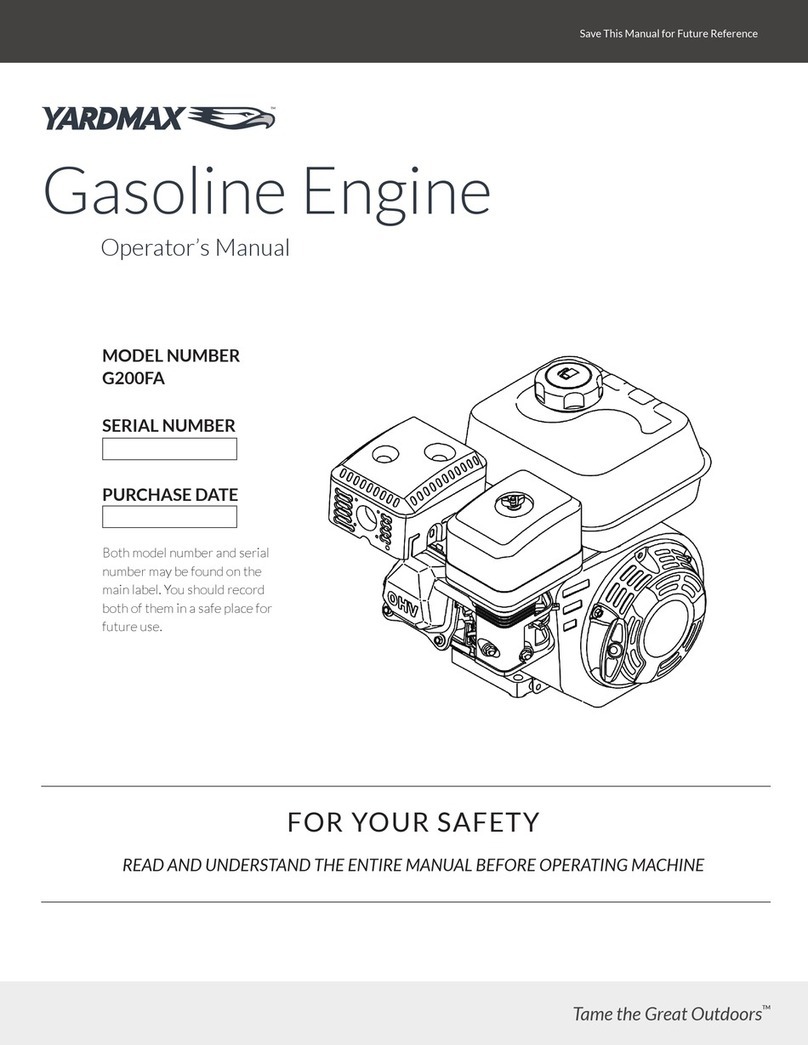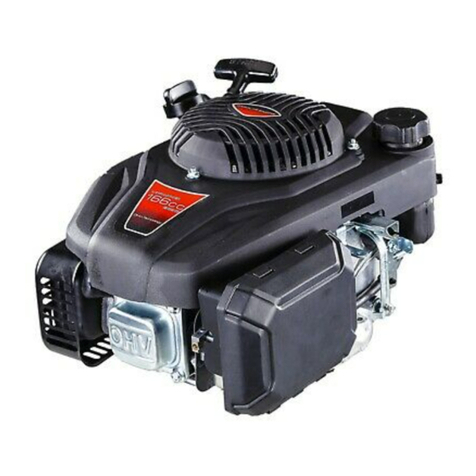
FUEL
VALVE
LEVER
SETIING
ENGINE
SPEED
Position the
throttle
lever
for
thedesired engine
speed.
Gasoline Engine » Operator's Manual
Some engine
applications
use a
remotely-mounted
throttle
control
rather
than
the
engine-mounted
throttle
lever shown
here.
For engine speed recommendations,
refer
to
the
instructions
provided
with
the equipmentpowered bythis engine.
MAINTENANCE
THE
IMPORTANCE
OF
MAINTENANCE
Good maintenance
is
essential
for
safe,
economical,
and
trouble-
free operation.
It
will also help reduce airpollution.
Improperly
maintaining
this
engine,
or
failure
to
correct
a problem before operation, can cause a
malfunction in which you can be seriously
hurt
or
killed.
Always
follow
the
inspection
and
maintenance
recommendations
and
schedules in
this
owner's
manual.
To
help you properly care
for
your
engine, the following pages
include a maintenance schedule, routine inspection procedures,
and
simple maintenance procedures using basic hand tools.
Other
service tasks
that
are more difficult,
or
require special tools, are
best handled by professionals
and
are normally performed by a
technician
or
other
qualified mechanic.
The
maintenance
schedule
applies
to
normal
operating
conditions.
If
you operate your engine under unusual conditions,
such
as
sustained high-load
or
high-temperature operation,
or
use
in unusually
wet
or
dusty conditions, consult your servicing
dealer
for
recommendations applicable
to
your individual needs
and
use.
MAINTENANCE
SAFETY
PRECAUTIONS
Some
of
the
most
important
safety precautions are
as
follows:
However,
we
cannot
warn
you
of
every
conceivable hazard
that
can arise in performing maintenance. Only you can decide
whether
or
notyou should perform agiven task.
1.
Failure
to
properly follow maintenance instructions
and precautions
can
cause
you
to
be
seriously
hurt
or
killed.
Always follow the procedures and precautions in the
owner'smanual.
Make
sure
the
engine
is
off
before
you
begin
any
maintenance
or
repairs. This will eliminate several potential
hazards:
e Carbon monoxidepoisoning
from
engineexhaust.
Be
sure there
is
adequate ventilation wheneveryou operate
theengine.
e Burns
from
hot
parts.
Lettheengine
and
exhaustsystem cool beforetouching.
elnjury
from
movingparts.
Do notrun theengine unless instructed
to
do
so.
2.
Read
the instructions before you begin,
and
make sure you
have thetools and skills required.
3.
To
reduce the possibility
of
fire
or
explosion,
be
careful when
working around gasoline.
Use
only a nonflammable solvent,
not
gasoline,
to
clean parts. Keep cigarettes, sparks and
flames awayfrom all fuel-related parts.
Remember
that
your
servicing dealer knows
your
engine best
and
is
fully
equipped
to
maintain
and
repairit.
To
ensure the best quality
and
reliability, use only new, genuine
parts
or
their
equivalents
for
repair
and
replacement.
Operation
&
Maintenance
I 8
